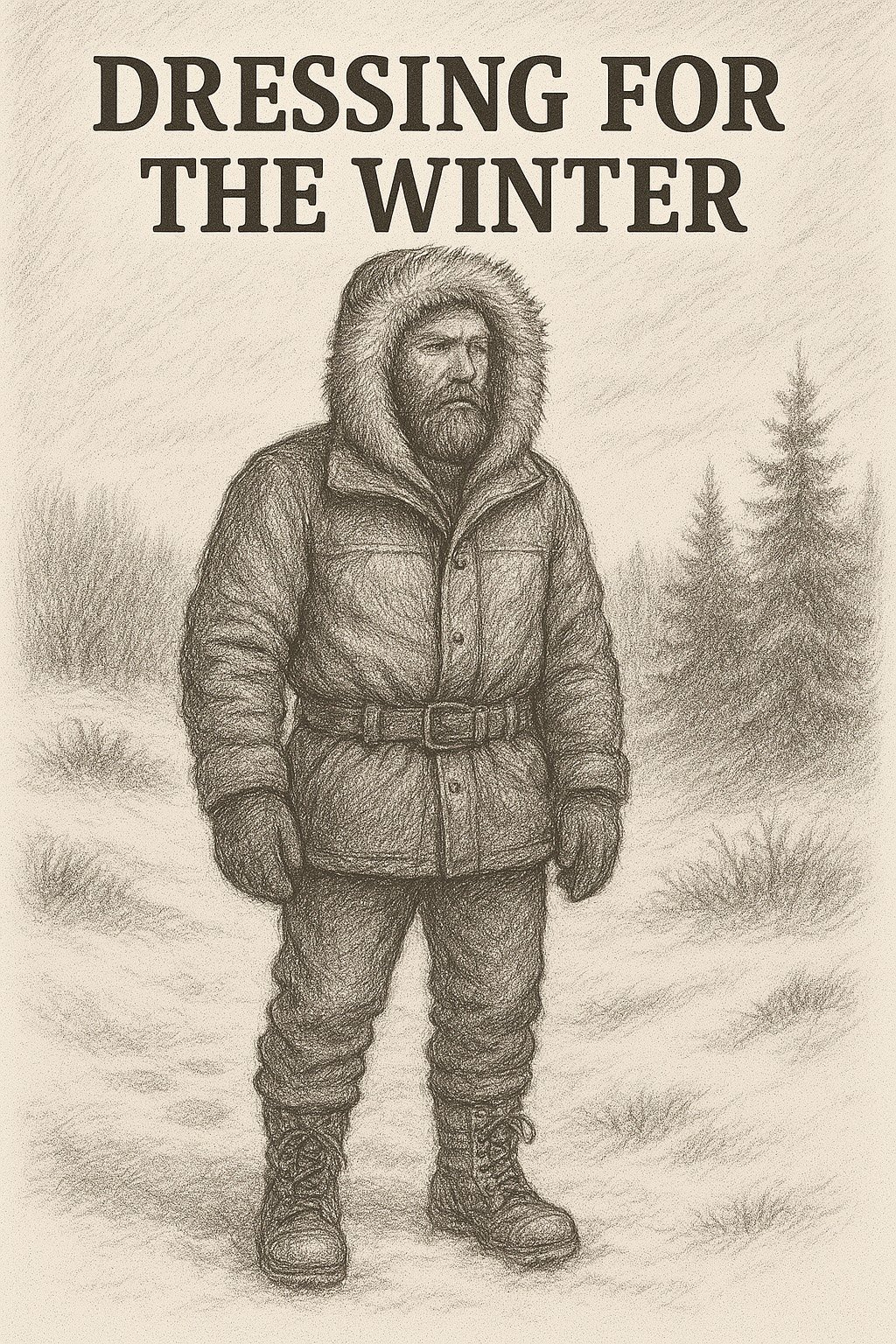Day 25: How to endure a whiteout lockdown...
How to dress for winter: How to dress for winter? I recently had a friend of a friend reach out to me who has spent her entire life in Georgia. She's getting ready to go to Iceland. This should be fun. Whenever anyone is asked how to dress for the cold they often quickly respond with a dress in layers. The problem with this advice is that I can wear six t-shirts and still be cold where I should just wear one chunky wool Icelandic sweater to be warm. So the proper answer to how I should dress in winter is in centimeters or inches. With loft. When someone says dress in layers what they really mean is dress in a thick amount of insulation. Be that 3 medium thickness layers or one big chunky wool layer. Having said this, there are really only two kinds of cold. Wet cold and dry cold. Wet cold is the worst because it might be cold enough to make it icy and slushy but then you moving around in this environment are going to get wet. When you are wet it takes an extreme amount of heat to dry you out and to keep you warm. Dry cold on the other hand happens when it is far below freezing and even the humidity of your lungs falls straight to the earth. In a dry cold you can wear multiple wool layers and have a cotton external layer and sweat through the wool layers and have the cotton external layer using capillary transfer to pull the moisture to the outside and manifest in the form of frost that you brush off of your anorak. This is usually somewhere below 20° below zero. This is my preferred cold to be in. Wet cold is above and below freezing and Below about 45 °. For dry cold you are wearing Arctic equipment with huge amounts of insulation and not worrying about getting wet as much. For wet cold you need clothing that does not have capillary transfer so cotton is out. Some clothing examples for wet cold, would include synthetics wool and a Gore-Tex or waterproof outer layer. One of the biggest failures people have in the cold in general is their clothing is too tight. Especially your gloves and your boots. If it is a wet cold your boots need to be waterproof, if it is a dry cold your boots need to be thick with multiple socks and not super tight. Mukluks are the perfect example of loose fitting super warm snow socks. I prefer them in the dry cold. So to wrap this up, wool is your friend Gore-Tex is amazing unless it is a dry cold then cotton is king on the outside only. Wear loose clothing and remember you can't put something on you didn't bring when it gets cold, but you can take things off you don't need when it gets hot.




